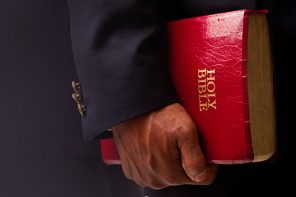In 1792, Dr. John Moore published the three-volume memoir of his “Grand Tour,” that art-historical pilgrimage to the Continent that was the virtual duty of British elites in the eighteenth and early nineteenth centuries. The young Moore just so happened to be in Rome when Gian Angelo Braschi, a Roman noble, was nominated to the papacy after a long five-month conclave, as Pius VI. In those days, the nomination of a new Pope was greeted with elaborate festivals and parades throughout the eternal City.
The Braschi cavalcade was an interesting one. The procession left the Church of Saint John Lateran and made its way to the Capitoline Hill, where the supreme pontiff was given the keys to the city by the senator of Rome, the leading secular figure in this only semi-secular city.
The ritual choreography so far was quite clear: the Pope received his sacred authority at the Lateran; now he received his secular power at Rome’s City Hall. The Hall that was, intriguingly, also home to a marvelous Classical art museum (the first art museum in the world, in fact) that opened to the public under Vatican auspices in 1734.
What came next was striking. As Pope Pius VI descended the monumental Capitoline stairway he was greeted by the Chief Rabbi of the Jewish community in Rome, who made a gift to the Roman pontiff of a parchment scroll with the Ten Commandments, written in Hebrew. The Pope accepted the gift, but made a point of publicly proclaiming that he rejected the Jewish interpretation of the document he had just received. Then the parade marched musically on.
There are several notable aspects to this exchange. The first is the failure of decorum involved. Imagine making a gift of a book and having the recipient of said gift inform you: first that he disagrees with the way you read the book, and second that he disagrees with the reason you think it an important book to read. He doesn’t even agree on how many chapters are in the book. But thanks all the same…
The Rabbi was making an overture, trying to find common ground, by presenting a document that (so he presumably believed) Jews and Christians had in common. The Pope correctly reminded the Rabbi that they do not have this book in common, that Christians not only read the Commandments differently, but no longer think all of them are in force. The plea for Judeo-Christian commonality was always a bit of a chimera.
So far so good, and I have worried over this very matter before in reflections ranging from Roy Moore’s massive Ten Commandment monument in Alabama to the evangelical plea for maintaining the United States’ identity as a Judeo-Christian nation. But what I would like to pursue further is a strangely peripheral matter: the fact that this exchange took place in front of a museum, the first fully public art museum in the world. And what that museum housed is, presumably, something else over which Jews and Catholics disagreed: imagistic representations of the divine, and pagan divinity at that.
The Profane Museum
A Classical Greek art museum is literally a “shrine to the [Greek] muses,” a subtle flirtation with the pagan presumably no Jew (nor many Catholics) would openly avow.
There is much more to be said about all of this; the multiple meanings of the public display of profane art and pagan form.
Pope Clement XIII opened what is called the “Profane Museum” inside the Vatican Palace as early as 1767. Pope Pius VI was destined to significantly expand that collection into the museum complex that still bears his name: the Museo Pio-Clementino. And that is still the very heart of the Vatican Museums today.
So a Rabbi and a Pope had a quick quarrel about the Ten Commandments in front of the first public art museum in the world. Where they disagreed most sharply was over the status of the second commandment. In the late 18th century, Art was being subtly detached from Religion, the Christian religion that is, as a separate source of public/private epiphanies.
Art was the new religion, and museums were their new temples. This profound cultural movement has not come to rest in our own time.




